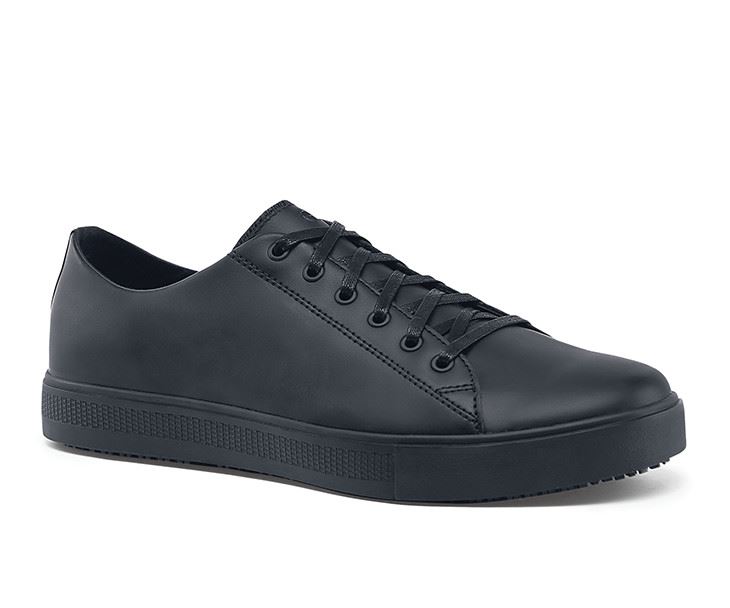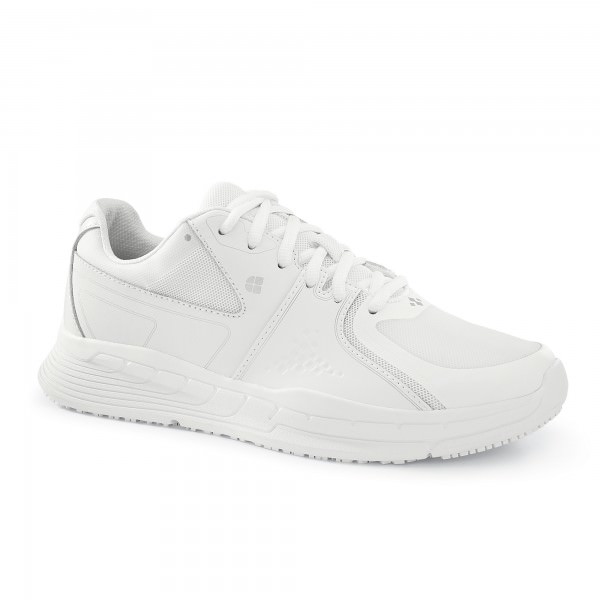Working as a waiter or waitress can expose you to different types of potential hazards. Cuts caused by broken glass, back pain and foot problems can all be common waitstaff injuries you should be aware of. In most cases, they can easily be eliminated with the correct precautions.

Here are 6 of the most common Waiter & Waitress injuries and how to avoid them.
1. Sore Feet
One of the most common waiter and waitress injuries is sore feet. It’s usually caused by wearing unsupportive shoes at work. While you might be tempted to wear your comfortable trainers, they don’t offer the same support of actual work shoes that are designed specifically to meet the needs of waitstaff.
You need to think about slip and water-resistance, the materials they’re made from and even the tread so you can stay on your feet all day.
|
|
|
Old School Low Rider IV is a classic look with extra cushioning for added comfort, TripGuard and slip and water-resistance plus a removable cushioned insole. Condor is a stylish shoe that features a wider heel, giving you trusted traction where you need it the most. Plus, it features a padded collar and tongue, slip-resistance and SpillGuard protection.
2. Cuts
One of the most common waiter and waitress problems is the potential threat from sharp knives and broken glass. When you're working with cutlery and glasses on a regular basis, it’s easy to forget they need to be handled carefully. Usually, cuts and grazes from sharp objects are minor injuries but in more serious cases, they can be severe.
To reduce the possibility of cuts, make sure to handle cutlery safely. Before you pick up any plates, realign cutlery to ensure that it does not fall when it’s being carried. If a glass is broken, pick it up wearing gloves or use a brush and pan to avoid touching it with your hands.
3. Burns and Scalds
Carrying hot food and drinks can increase the risk of being burned or scalded at work - especially when food has been put in the microwave. To reduce the chances of suffering a potential burn at work, carry plates and trays away from your body. So, if you do drop a plate, you can avoid being burnt.
It's quicker to tidy up a mess rather than the time it takes to heal from a potentially serious burn.

4. Back Pain
Painful backache can be common for servers. It’s a possibility because you're on your feet for long periods of time and repeatedly carrying plates and trays. Bending down to pick up heavy objects can cause serious injury to your back if you don't lift correctly.
When lifting, you should bend your knees and avoid taking the weight on your back. You might feel uncomfortable asking for assistance but if something is too heavy for you to carry alone, ask someone to help you. It’s the better option rather than risking an injury.
5. Wrist Strain
Just like baristas, who can suffer from repetitive strain injuries, waitstaff can also suffer from potential wrist strain. Carrying plates incorrectly can result in putting too much strain on your wrists and hands. When you're doing long shifts, this repeated action may cause serious muscle damage.
You can avoid this by making sure you're carrying plates correctly. When you're carrying two or three plates, spread the balance over your hands and arms so you avoid putting it all on your wrists.
If you do have a lot to carry, then either ask for help or do more than one trip and carry fewer items to avoid the risk of injuries.
6. Leg Injuries
As a waiter or waitress, it’s likely that you’re not only going to be on your feet all day but walking a lot when you’re on a shift. The risk of possible injuries increases when you're constantly walking back and forth from the kitchen to the main restaurant area, increasing the chances of slips, trips and falls.

These types of risks can cause ankle and leg sprains or other serious injuries. The chances of this can be reduced massively if you wear slip-resistant shoes. You’ll significantly lower the chances of falling over and possibly hurting yourself.
Stay Prepared For Your Interview and Leave a Lasting Impression
Now that you know how you avoid the possible injuries in a restaurant, take a step backwards and actually gain knowledge on how to secure a waiter or waitress job in the first place. If you’re worried about some of the questions you’ll be asked and how you can best answer them, don’t worry, we’ve got you covered.
We’ve created a guide on 20 waitstaff questions (and answers) to increase your chances of making a great impression in the interview. To grab your free copy, click on the link below.



























































































